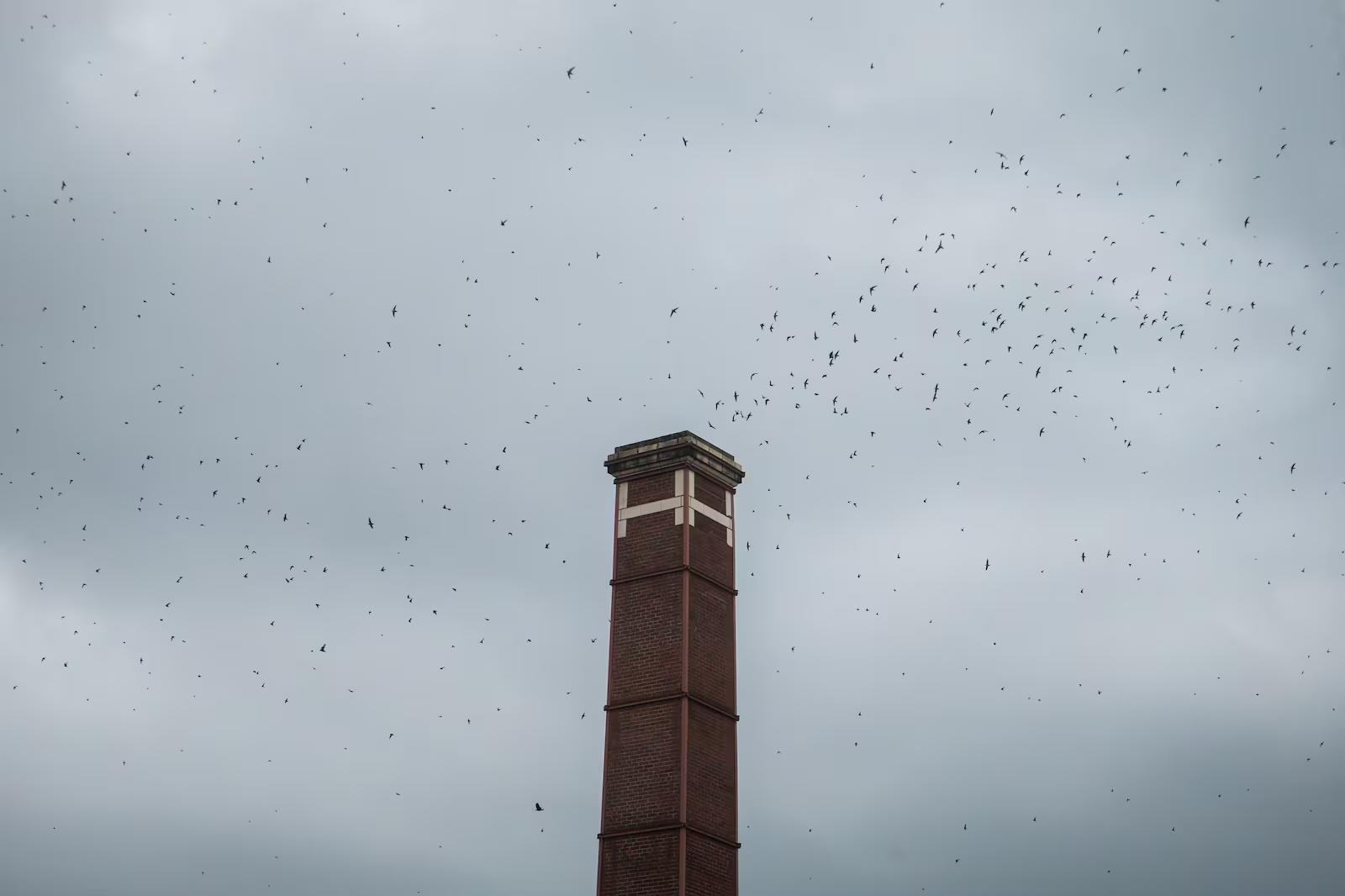For more than 30 years, Portlanders flocked to Chapman Elementary School each fall to watch thousands of Vaux’s swifts swirl across the sky before funneling into the school’s tall brick chimney at dusk. The spectacle became one of the city’s most beloved seasonal traditions, drawing families, birdwatchers, and curious newcomers alike.
But this year, the Chapman chimney is quiet. The swifts, it seems, have shifted their nightly roost to other corners of the city.
A New Chapter for Portland’s Swifts
While the Chapman site stands empty, conservationists emphasize that the swifts haven’t abandoned Portland altogether. Instead, they appear to be spreading out across multiple locations.
Also Read
“What we’re seeing is more chimneys being used than in the past before Chapman, but smaller numbers of birds at those chimneys,” explained Joe Liebezeit, statewide conservation director for the Bird Alliance of Oregon.
The birds favor open brick or stone chimneys where they can cling together for warmth and safety during migration. Peak season in Portland usually arrives around mid-September, when nightly counts often reach 8,000–9,000 birds. So far, the Bird Alliance says numbers look slightly lower than average, though that may simply reflect unreported roosts scattered across the metro area.
“There are thousands of birds in town,” Liebezeit added. “We’ll have to see what the birds do and follow.”
Abernethy Elementary Becomes a Hotspot
One place bird lovers are already gathering is Abernethy Elementary School in Southeast Portland. Principal Melissa Dunn says the swifts’ presence has been a thrill for both students and neighbors.
“They’ve come out at morning drop-off, they’ve come out at lunch and recess,” Dunn said. “And then they do their big go-back-to-bed at like a little before 8 right now.”
Students and families hear the birds’ high-pitched chirps echo above the playground throughout the day. In the evenings, a few hundred swifts put on their own version of the Chapman show, spiraling across the sky before dropping into the school chimney.
Crowds have started forming here too. Some bring picnic blankets and lawn chairs; others stumble upon the gathering by accident. Jacqueline Dickson, visiting from San Diego, discovered the event by chance while walking her dog.
“I literally went to get takeout, was walking back to the house and then saw everyone,” she said. “I can just sit down. I can just watch for a little while.”
Viewing With Respect
Both Abernethy staff and the Bird Alliance stress the importance of being considerate while watching the birds. Because schools and residential areas aren’t designed to host large gatherings, visitors are asked to bike, walk, or use public transit when possible, avoid blocking driveways, and pack out trash.
The Bird Alliance also warns against flying drones near swift roosts. Drones can disturb the birds, raising stress levels during migration and even driving them away from otherwise safe chimneys.
Respectful viewing has become especially important given that human disturbance may have contributed to Chapman’s decline as a roosting site.
Why Did the Swifts Leave Chapman?
The Chapman site’s sudden emptiness surprised many Portlanders. After three decades of consistent use, it was expected the birds would return annually.
According to the Bird Alliance, the reason is likely a combination of factors:
-
Predators: Cooper’s hawks, peregrine falcons, and crows learned that Chapman’s large flocks offered easy hunting opportunities.
-
Human Disturbance: Drones, loud crowds, and the popularity of the Chapman roost may have driven the swifts to seek quieter locations.
-
Natural Change: Swifts sometimes abandon chimneys after a few years, though Chapman’s decades-long consistency made the shift unusual.
Importantly, conservationists note that there is no evidence of structural changes to the chimney itself, nor clear data linking predator numbers or drone activity directly to the decline. The swifts may simply have decided to move on.
A Species in Decline
Beyond Portland, Vaux’s swifts face broader challenges. Across North America, populations have dropped significantly in recent decades due to habitat loss. Many old brick chimneys that once provided safe roosts are capped or demolished as buildings are modernized.
The Chapman spectacle helped bring awareness to this decline, highlighting how urban spaces can still play a role in the birds’ survival. The swifts’ decision to disperse across smaller chimneys in Portland may mirror the larger challenge of finding safe roosts in a changing landscape.
Protecting the Tradition
The Bird Alliance remains cautious about publicizing the exact locations of new roosts. Smaller sites can’t handle large crowds, and property owners may react negatively if gatherings disrupt their neighborhoods. In the worst cases, frustrated owners might cap chimneys, permanently removing them as roosting options.
“We don’t want to announce where the swifts are right now, because we could cause those problems for other communities,” Liebezeit said. “And if landowners get problems, they might want to cap the chimney. And that’s something we really want to avoid.”
Instead, the Alliance encourages Portlanders to enjoy the birds responsibly wherever they appear, to report large roosts of over 500 birds through their website, and to remember that respectful observation helps ensure the swifts continue to return.
A Different, But Still Magical, Experience
Though the days of thousands of swifts pouring into Chapman Elementary’s chimney may be over, the magic of their migration endures. Families at Abernethy Elementary—and at smaller, quieter sites across Portland—are still treated to the swirling aerial displays that have captivated the city for decades.
On a recent evening, as the last birds disappeared into Abernethy’s chimney, cheers and applause broke out from the crowd gathered below.
“There’s something really beautiful about it being over the school and the chimney,” said Dickson, who had stumbled upon the show. “It almost reminds you of the ocean and fish, kind of like those kinds of schools. … It’s wild to watch and it’s incredible.”
For Portlanders, the swifts’ new roosting pattern may mark the end of an era at Chapman—but it also signals the start of a new chapter, one where the birds’ mysterious choices scatter their magic across the city.












